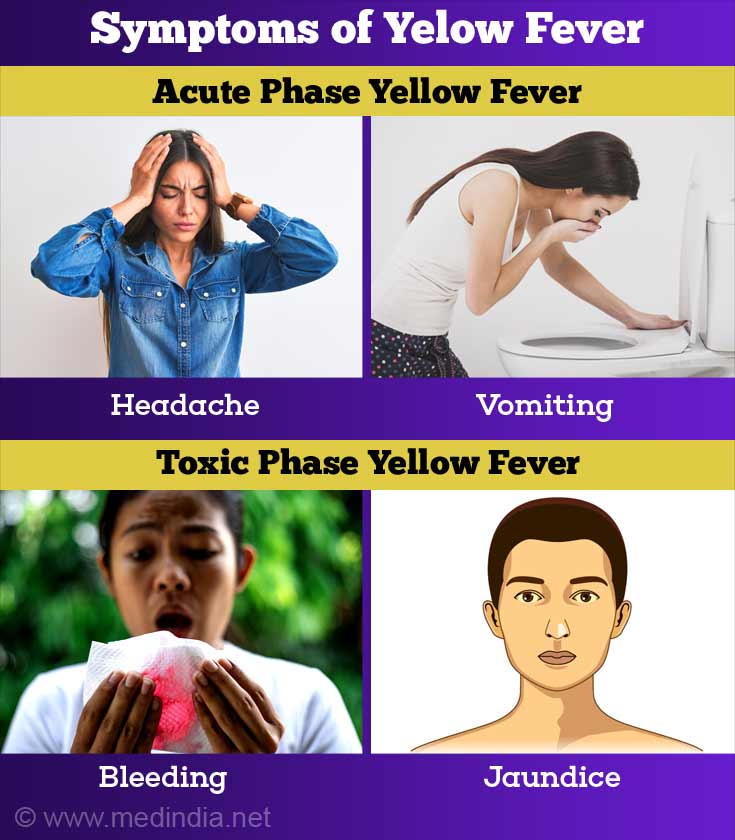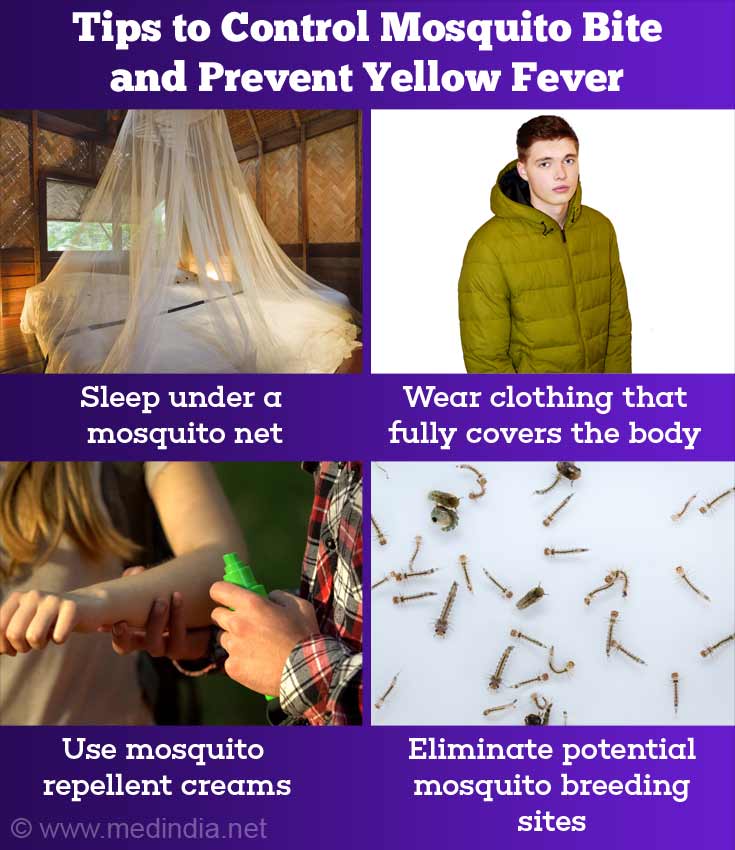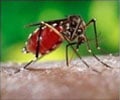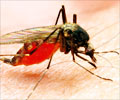- Introduction on Yellow Fever - (http://www.paho.org/hq/index.php?option=com_topics&view=article&id=69&itemid=40784&lang=en)
- Yellow Fever - (https://www.cdc.gov/yellowfever/qa/index.html)
What is Yellow Fever?
Yellow fever is an acute viral hemorrhagic disease transmitted by infected mosquitoes. The word ‘yellow’ in the name refers to the jaundice that occurs as a consequence of the infection in some patients. Yellow fever is caused by the yellow fever virus. It is an arbovirus and belongs to the family Flaviviridae. Yellow fever is most prevalent in tropical and subtropical areas in South America and Africa.
In most cases, symptoms include high fever, chills, headache, muscle aches, vomiting and backache; jaundice, kidney failure and internal bleeding can be seen in severe cases.
A safe and effective vaccine against yellow fever is available to prevent the occurrence of the disease. Some countries require vaccinations for travelers. Reducing the population of the transmitting mosquito can help prevent the infection. In places where yellow fever is common and vaccination is uncommon, early diagnosis and immunizations are important to prevent deadly outbreaks.
Mode of Transmission
Yellow fever virus is mainly transmitted through the bite of the yellow fever mosquito Aedes aegypti that carries the infection. Aedes mosquitoes bite from dawn to dusk.
People who suffer from yellow fever get the fever due to the bite of an infected female mosquito. The mosquitoes breed in stagnant water which is commonly present in discarded tires, flower pots, oil drums, and water storage containers close to human dwellings. The infections are usually mild, but the disease has the potential to cause life-threatening illness.
After getting affected by the mosquito, the virus reproduces in lymph nodes and affects the dendritic cells in particular. It also affects the liver and can finally cause multiple organ failure.
What are the Types of Yellow Fever?
Yellow fever has three types of transmission cycles:
- Jungle or Sylvatic yellow fever: It involves transmission of the disease from infected mosquitoes to monkeys in the tropical forests. Humans working or traveling in the forest are affected with yellow fever accidentally (transmission from monkey to humans).
- Intermediate yellow fever: In this type of yellow fever, infected mosquitoes, those that breed in households and wild may infect both humans and monkeys. This is the most common type of yellow fever outbreak in Africa.
- Urban yellow fever: This cycle involves the transmission of the virus from person to person by the infected mosquitoes.
Facts on Yellow Fever
Yellow fever virus is endemic in entire or in selected regions of 34 tropical countries of Africa and 13 tropical countries in Central and South America.
Globally, an estimated 200,000 cases of yellow fever (causing 30,000 deaths) are reported each year.
Burden of yellow fever in Africa during 2013 was 84,000–170,000 of severe cases and 29, 000–60,000 deaths. This analysis was based on a modeling study.
The Yellow Fever Initiative was launched in 2006 and has made significant progress in combating the disease in West Africa.
Points to note are that more than 105 million people have been vaccinated in mass campaigns and no outbreaks of yellow fever were reported in West Africa during 2015.
What are the Symptoms of Yellow Fever?
Symptoms of yellow fever usually develop after 3 - 6 days following a mosquito bite.
There are two stages of the illness-
- Acute phase
- Toxic phase
Symptoms of acute phase yellow fever
- Fever
- Muscle pain
- Backache
- Headache
- Chills
- Loss of appetite
- Nausea
- Vomiting
Most of the patients improve and their symptoms disappear after 3-4 days.
However, 15% of patients enter a second, toxic phase within 24 hours of the initial remission. Several organs are affected in this stage, including the heart, liver and kidney.
Symptoms of toxic phase yellow fever
- High fever
- Jaundice
- Abdominal pain with vomiting
- Bleeding from the mouth, nose, eyes or stomach
- Blood in the vomit and feces
- Deterioration of kidney function
- Seizures
- Delirium
- Heart rhythm problems
Half of the patients who enter the toxic phase die within 10-14 days, the rest recover without significant organ damage.

How do you Diagnose Yellow Fever?
Multiple laboratory tests can be performed in patients with yellow fever; these can vary depending on the severity and stages of illness.
Clinical diagnosis of yellow fever is made on the basis of symptoms and signs. If yellow fever is suspected, the virus cannot be confirmed until 6 to 10 days after the infection.
The laboratory diagnosis of yellow fever is made by virological methods by detecting the virus or its genetic material in serum or tissue or by serological testing by detecting antibodies in serum.
Virological methods:
- A direct confirmation can be obtained by reverse transcription polymerase chain reaction (RT-PCR), where the genome of the virus is amplified. Viral RNA can be detected during the first 5 days of symptom onset.
- Another direct approach is the isolation of the virus and its growth in cell culture using blood plasma; this method can take 1 to 4 weeks and is rarely used due to its complexity.
Serological methods:
- Testing of serum to detect virus-specific IgG by enzyme-linked immunosorbent assay (ELISA) and neutralizing antibodies by plaque reduction neutralization test (PRNT) are useful in later stages of the disease (from the 5th day since the onset of symptoms). Sometimes the virus can be found in blood samples taken early in the infection.
Risk of yellow fever among Travelers
A traveler’s risk for getting affected with yellow fever is determined by various factors, including travel location, immunization status, season, duration of exposure, occupational activities while traveling, and local rate of virus transmission at the time of travel.
So, yellow fever vaccination is recommended for those traveling to endemic and transitional areas where disease outbreaks occur. Travelers should get vaccinated against yellow fever 10 days prior to being in an endemic area.
After getting vaccinated against yellow fever, the traveler will receive an International Certificate of Vaccination or Prophylaxis (ICVP, also called a “yellow card”) which must be in their possession while traveling, because some countries require vaccination proof for yellow fever at the time of entry.
How can Yellow Fever be Treated?
There is no specific treatment for yellow fever. Only supportive care to treat dehydration and fever can be offered. Patients should be kept away from further exposure to mosquitoes. Most people get better after a long recovery period. Hospitalization is advisable and intensive care may be needed because of rapid deterioration in some cases.
Supportive care improves the outcome in most patients. The following measures can be undertaken -
* To avoid dehydration, it is advised that persons with yellow fever should rest and drink plenty of fluids.
* Paracetamol can be used for pain relief. Aspirin is contraindicated as it can have a devastating effect in the case of internal bleeding.
* Antibiotics can be used to treat associated bacterial infections.
* Treatment for patients in the toxic phase is also symptomatic and may include-
- Blood replacement for severe bleeding
- Dialysis for kidney failure
- Administration of intravenous fluids
How can we Prevent Yellow Fever?
Yellow fever can be prevented with the help of vaccination and effective mosquito control.
Vaccination-
Vaccination is the most important measure for preventing yellow fever. The yellow fever vaccine is safe and affordable. It provides effective immunity against yellow fever within 30 days for 99% of those vaccinated.
It can be offered through routine infant immunization, mass campaigns in countries at risk or to people who travel to yellow fever endemic areas.
A single dose of the yellow fever vaccine provides protection for 30-35 years or probably for life. Serious side effects of the vaccine are extremely rare.

People Who Should Not Take Vaccination For Yellow Fever Are:
- Infants less than 9 months; however, infants aged 6-9 months, in areas where the risk of yellow fever is high, should receive the vaccine
- Pregnant women – except during a yellow fever outbreak when the risk of yellow fever is high
- People with severe allergies to egg protein
- People with severe immunodeficiency due to symptomatic HIV/AIDS
- People with thymus disorder
- People older than 60 should consult a doctor before they get vaccinated for yellow fever
Mosquito control-
Mosquito control is vital to prevent the transmission of yellow fever.
Transmission in urban areas can be controlled by-
- Eliminating potential mosquito breeding sites
- Using spray insecticides to kill adult mosquitoes
- Sleeping in screened or air conditioned rooms
- Using mosquito repellent creams, and lotions
- Wearing clothing that covers the body fully (long-sleeved shirts, long pants)
Protect Yourself: While many mosquitoes bite between sundown and sunrise; it is best to take preventive measures and protect yourself throughout the day.
- Avoid scratching if you are bitten by mosquitoes.
- Apply topical creams or lotions to reduce itching.
NOTE: Consult with your doctor immediately if you have high fever.












